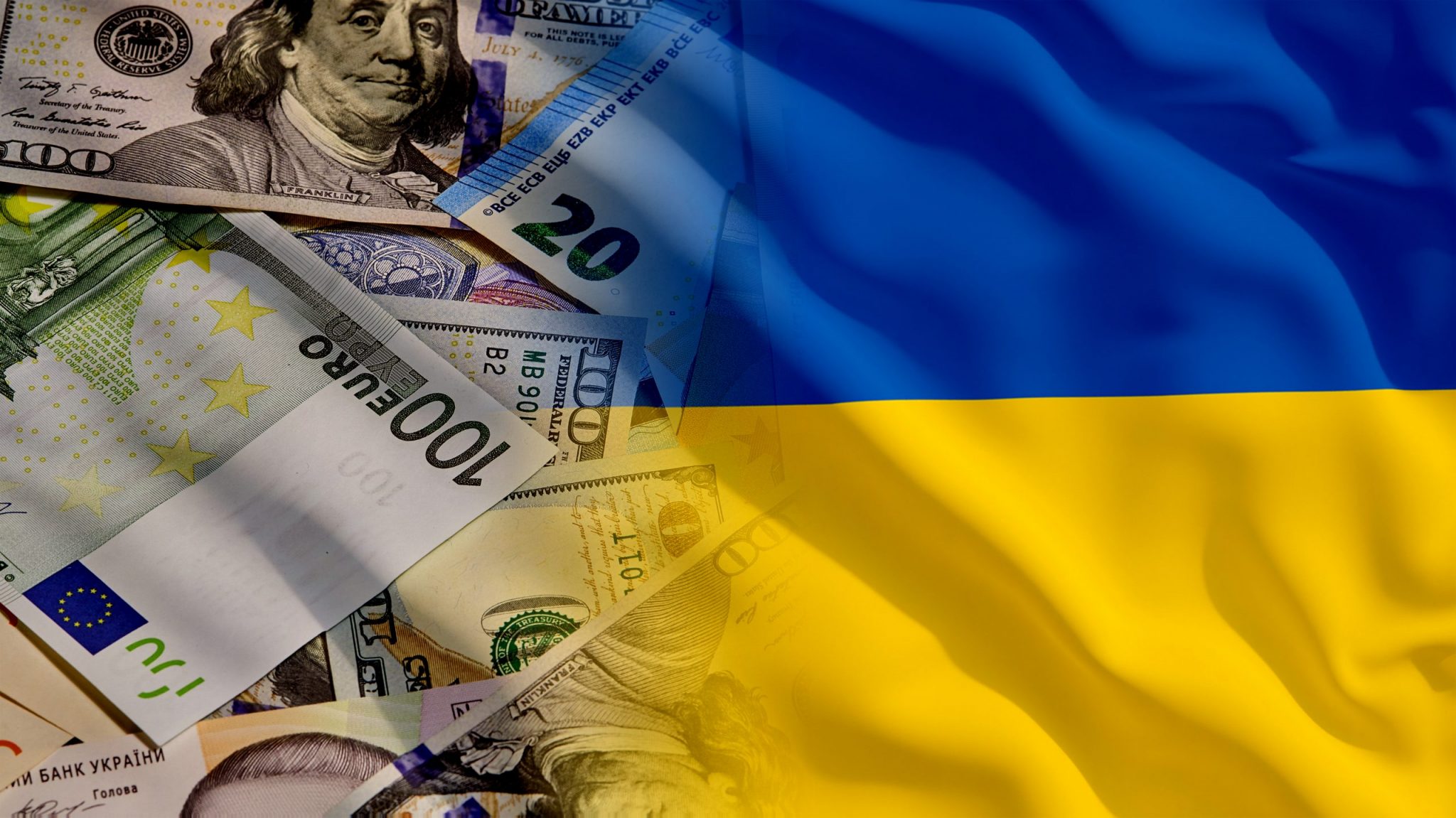Given how valiantly Ukrainians are defending the front lines of the free world, a morally and politically difficult job will fall to the leaders of the United States and the European Union: They will have to insist on sending Ukraine hundreds of billions of dollars for recovery and reconstruction only if the aid architecture and reform agenda aggressively prioritize anti-corruption. Protecting aid money from corruption and pressing forward with reform in Kyiv is essential for Ukrainian sovereignty, the country’s EU accession, and the integrity of Western tax dollars. Strong anti-corruption commitments and performance are key to Ukraine emerging from this devastating war with a modern democracy and fair economy worthy of such historic sacrifice.
Incorporating anti-corruption into a Modern Marshall Plan for Ukraine calls for swift and extensive planning. The need for transparency, accountability, and integrity is a critically important part of discussions about how to fund Ukrainian recovery that commenced at a conference in Lugano in July and will continue with a follow-on conference in Berlin on October 25. As scholars at the German Marshall Fund of the United States (GMF) and the Brookings Institution—two institutions historically involved in the original Marshall Plan—we feel an obligation to offer independent policy ideas for how the governments of the G7 and other donor countries can incorporate anti-corruption into the process of funding the recovery and reconstruction of Ukraine.
Infusing strong approaches to anti-corruption into the recovery process is vital for Ukraine, for three reasons: the strategic imperative, the reform imperative, and the political imperative.
Countering Strategic Corruption
First, strategic corruption is a leading vector of malign Kremlin influence, whereas fighting corruption since 2014 is how Ukraine has built the great nation that has impressed the world on the battlefield this year. Putin spent two decades trying to control Kyiv by enriching pro-Russian oligarchs in Ukraine, such as Dmytro Firtash and Viktor Medvedchuk, who would, in turn, go on to bankroll political parties and buy up half of Ukrainian television news channels. A couple of weeks after President Joe Biden was inaugurated, Ukraine sanctioned Medvedchuk’s close associates, forced their pro-Russian news channels off the air, and seized assets owned by Medvedchuk and his family. Less than two days later, the Russian military started building up on Ukraine’s borders as an alternative means to undermine Ukrainian sovereignty, once strategic corruption had been rendered less effective. We doubt that is a pure coincidence.
Since then, Russian forces have been bogged down by debilitating corruption, causing Russian spies to steal bribe money meant to buy a Ukrainian coup, Russian supply chains to be gutted, and Russian soldiers to suffer weak morale. By contrast, Ukrainians fight with confidence that they are defending the democracy and rule of law they have built over the past eight years. This same social resilience will be key to building back better as a European Ukraine.
The Need for Reform
Second, Ukraine has instituted a stronger program of anti-corruption reforms over the past eight years than any other country in contemporary history. Their public transparency and specialized anti-corruption accountability systems are held up as world-leading models of muscular reform. However, some of these new anti-corruption institutions are experiencing growing pains, while other important areas of the state—from the judiciary to the security service—remain unreformed. As a result, the journey from Soviet kleptocracy to a modern political-economic system is far from complete.
Three of the five specialized anti-corruption bodies (independent agencies that prevent, investigate, prosecute, rule on, and recover assets related to grand corruption) lack permanent leadership, and all five could use more resources and stronger authorities. Power is concentrated in the Office of the President, and the broader governing system allows for informal decision-making that favors powerful interests and bypasses democratic accountability. Oligarchs still monopolize the commanding heights of the Ukrainian economy (media, energy, construction, transport, etc.). Costs for large state construction projects are inflated by 30 percent, including a 10 percent kickback for policymakers. Pumping hundreds of billions of dollars in reconstruction funding into this governing system that still suffers from significant corruption is a sure way to seed a new oligarchy, and risk of failure of the reconstruction effort.
The Political Risk
Third, it may not take more than one or two major corruption scandals to harm bipartisan support in the United States for giving Ukraine billions in assistance. A poll conducted in October found that 66 percent of Americans support providing weapons to Ukraine, up from 51 percent in August. Those gains in US public opinion were earned through the sacrifice and valor of the Ukrainians, who launched a historic counteroffensive starting in late August.
It would be all too easy for evidence of significant corruption related to US support to push this public approval level down below its August level of 51 percent. Some US politicians would quite reasonably express concern about risks to US taxpayer resources. Other influencers—both Biden’s domestic political opponents and the Kremlin’s propogandists—would make hay of the opportunity to advance their own political interests. Nobody should set unrealistic expectations that postwar reconstruction will be perfectly free of corruption. It never is. But if we do not significantly impair the ability of oligarchs and kleptocrats to plunder the economy that emerges from this war, there may not be a recovery on the scale that the Ukrainian people have earned.
A Two-Part Plan
Prioritizing anti-corruption during recovery calls for a two-part strategy: safeguarding the reconstruction process itself and continuing to advance broader anti-corruption reforms.
Strong Anti-Corruption Architecture
First, the architecture through which recovery funding flows must be insulated from leakage to corruption, as described in a paper published in September by GMF. Instead of creating a new aid agency or centralized trust fund, the G7 and other partner countries should work through the channels for multi-donor funds at the existing international financial institutions (IFIs) such as the International Monetary Fund, the World Bank, and the European Bank for Reconstruction and Development. But the IFI architecture should be augmented with a new coordinating platform and proven ways to avoid corruption.
As in other international institutions, US and global leadership must be balanced and sequenced strategically. Donor coordination should initially be led by the G7, which should appoint an American with global stature—because only the United States can bring together a truly global coalition and forge consensus—to serve as the first recovery coordinator, with responsibilities that include aligning conditionality principles and oversight requirements. The coordinator should create a recovery task force headed by an EU official and reliant upon European Commission staff to serve as the secretariat and convener of task force members from the G7 and other interested countries. The coordinator should also create the position of an independent inspector general with strong authority to oversee recovery funding flows and investigate accusations of misconduct. Over time, the recovery process should be increasingly managed by the European Commission—as Ukraine moves toward EU integration—and funded with seized Russian assets, which will require a long legal process.
Throughout all the processes carried out by this proposed recovery architecture, three principles will be most important:
- As much information as legally possible should be publicly disclosed in easily accessible formats, ranging from existing platforms like Ukraine’s ProZorro public procurement system to a new digital platform to centralize recovery-related documents.
- Recovery money should flow directly to well-vetted and highly transparent contractors, rather than first being intermingled with Ukrainian government budgetary accounts or allocated at the discretion of Ukrainian ministries.
- Local ownership should extend from Kyiv to the grassroots level by inviting Ukraine’s vibrant civil society to play a prominent role in the recovery process from day one. Because up to 30 percent of funds in large reconstructions of this kind can be diverted via corruption, the authors favor setting aside a tenth of that amount, or 3 percent, for fighting corruption. That includes innovative approaches such as boosting the number of independent investigative journalists acting as watchdogs both within Ukraine and in the surrounding region.
Making Aid Contingent on Progress
Second, recovery aid should be contingent upon Ukraine pushing ahead with the broader national anti-corruption reform journey it has been on since 2014. The war has bestowed President Volodymyr Zelensky with sky-high popularity at the same moment as the political influence of oligarchs has weakened, opening a window of opportunity for long-delayed reforms. In June, the European Commission gave Ukraine seven preconditions—about half involving anti-corruption—to advance in the EU accession process. The commission will report on Ukraine’s progress by the end of 2022.
By that time, Ukraine should make substantial progress on the top couple of preconditions: First, empower the specialized anti-corruption bodies with all necessary leadership, resources, and authorities. Second, finalize the process of inviting reputable foreign experts to vet the integrity of candidates to sit on high judicial governance bodies, and enact the pending legislation that would do the same for judges of the Constitutional Court. Reconstruction aid should be dependent on those preconditions being met.
Medium-term priorities for demonstrable progress as a precondition for future tranches of aid beyond 2022 should also be established and firmly enforced. These include true deoligarchization (not just the recent Anti-Oligarch law meant to limit the influence of oligarchs, but also forced divestment until nobody meets the definition of an oligarch) and fully joining the European Public Prosecutor’s Office (not just arranging to cooperate with it, as was agreed in March).
The original Marshall Plan did more than just rebuild a war-torn continent. It helped limit the spread of communism in Europe and begin an integration process that would eventually become the European Union. Like Stalin-era communism, corruption today is a glue that holds together modern autocracy emanating from Moscow and a weapon that regime and allied autocrats wield against democracy at home and abroad. To meet this challenge, a modern Marshall Plan should not only rebuild Ukraine, but also help reinforce the country’s sovereignty and bring it into the European Union by prioritizing anti-corruption in the aid architecture and reform agenda.
The views expressed in GMF publications and commentary are the views of the author alone.






